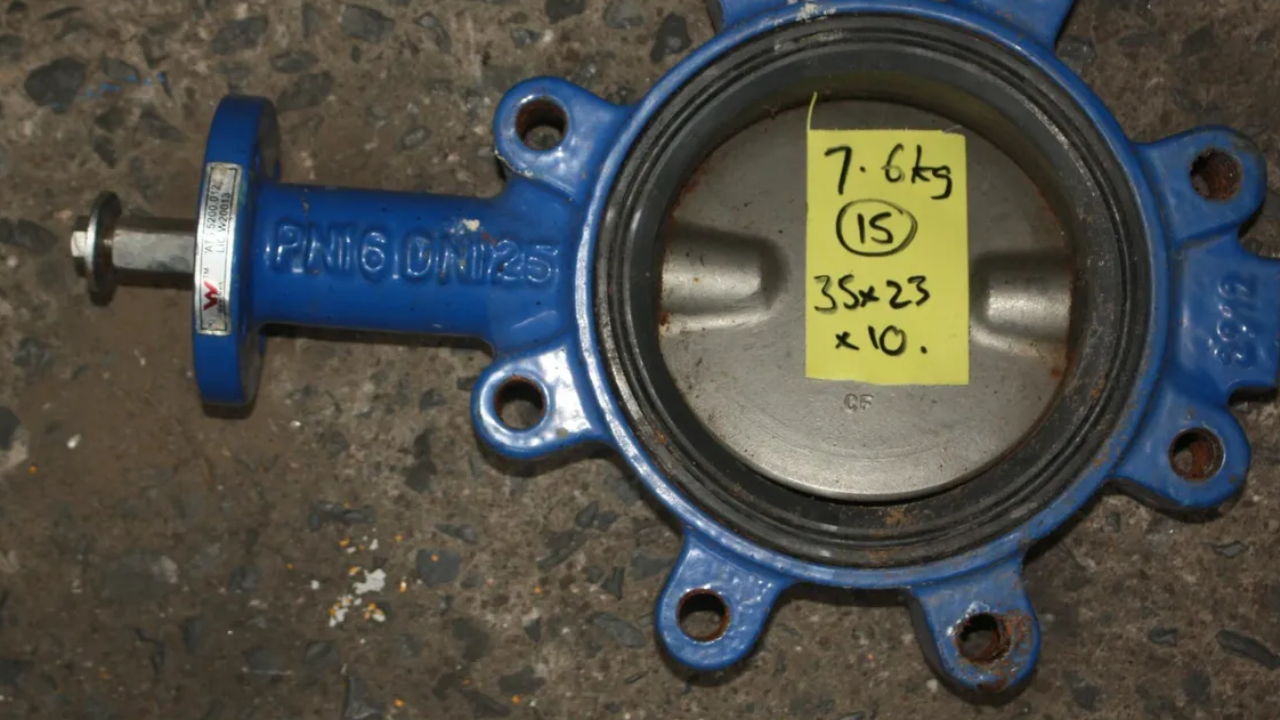A specific kind of butterfly valve called a lug-type valve is made to simplify fluid control in a range of industrial settings. They can be identified by the threaded lugs on the valve body. By acting as attachment points, these lugs enable the valve to be bolted firmly between two flanges. The simplicity of installation and removal is a major benefit of lug-type valves.
Because the lugs allow for a semi-permanent connection, simple maintenance can be performed without causing any disruption to the complete piping system. This design is especially useful in situations where regular valve maintenance or replacement is necessary. Because of their adaptability, lug type valves are used in a variety of industries, including chemical processing, HVAC systems, water treatment, and more.
Main Components of a Lug-type Butterfly Valve
The principal parts of a butterfly valve with lug design, examining their functions and contributions to the valve’s overall performance.
Body of Valve
The body of any butterfly valve, including the lug-type, serves as its foundation. The valve body, which is often constructed of stainless steel, cast iron, ductile iron, or other alloys, contains the important parts and serves as the structure that attaches to the pipeline. The threaded inserts called lugs, which are essential to the installation and upkeep of the valve, define the lug-type valve body.
Disc (Butterfly)
The disc regularly referred to as the butterfly because of its wing-like shape, is a vital aspect accountable for controlling the drift of fluids. Attached to the valve stem, the disc rotates in the valve body to either allow or obstruct the passage of fluid. Within the lug-kind butterfly valve, the disc is designed to have a sealing surface that ensures a decent close-off whilst the valve is closed, stopping leakage.
Stem
The stem serves as the connection between the actuator (which drives the movement of the valve) and the disc. In lug-type butterfly valves, the stem is typically centered, making sure uniform distribution of force during rotation. The stem may also be bigger beyond the valve body, offering a point of connection for various forms of actuators, which include manual hand levers, equipment operators, or pneumatic and electric-powered actuators.
Lugs
The defining feature of the lug-type butterfly valve is its lugs. These are threaded extensions at the valve body, strategically located to facilitate installation and elimination. Lugs serve as attachment factors for bolts, securing the valve among flanges in the pipeline. This design allows for a semi-permanent connection, making renovation and alternatives greater truthful without necessitating the disassembly of the entire piping device.
Seat
The seat is a critical element for accomplishing a dependable seal while the valve is closed. It’s far the interface in which the disc comes in touch with the valve body. Lug-type butterfly valves commonly employ resilient seats crafted from substances like EPDM, PTFE, or Nitrile, ensuring powerful sealing even under varying pressures and temperatures. The choice of seat material is frequently dictated by way of the unique requirements of the application.
A motor
The actuator, which propels the disc’s movement to regulate fluid flow, is the lug-type butterfly valve’s muscle. Actuators can be powered by pneumatic, electrical, or hydraulic power, or they can be manually manipulated with hand levers or gears. Using its stem connection, the actuator converts the operator’s or control system’s input into the rotating movement of the disc.
Gaskets and O-rings
Sealing is essential for keeping a butterfly valve leak-free and functional. To provide a trustworthy seal, O-rings, and gaskets are used in a variety of locations, such as around the stem or in between the valve body and the flanges. For these sealing elements, materials with durability against the fluid handled and environmental conditions, such as Viton, Nitrile, or EPDM, are frequently employed.
Retainer for Stem
One part that keeps the stem firmly in place within the valve body and keeps it from moving while the valve is operating is the stem retainer. More stability is added by it, particularly in high-pressure situations. To withstand the stresses applied to the stem, the stem retainer’s material and design are essential.
Conclusion
Gaining knowledge of the primary parts of a lug-type butterfly valve can help you appreciate the intricate engineering involved in these vital devices. Every part of the valve, from the sturdy body and well-placed lugs to the sealing elements and actuator, is essential to guaranteeing its lifetime, dependability, and functionality in a variety of industrial applications.
